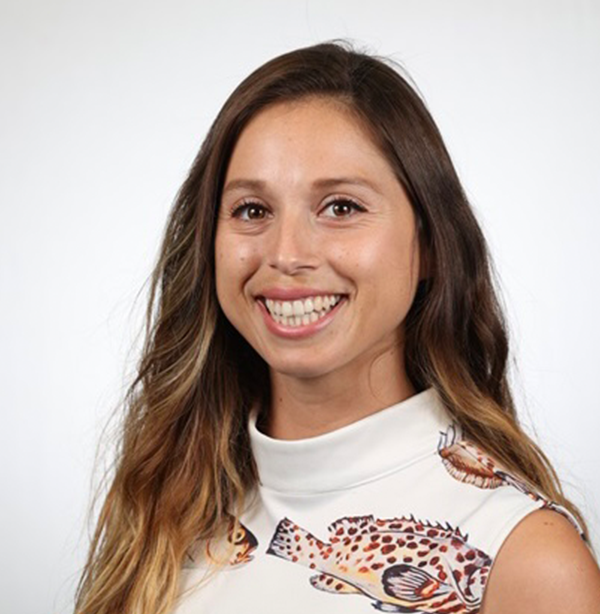Featured Grantee
Quick Facts
- Name: Kelcie L. Chiquillo
- Comes from: Sacramento, California
- Lives in: San Juan, Puerto Rico
- In three words: Compassionate, Grounded, Courageous
- Leisure time activities: scuba diving, paddleboarding, exercising, fly fishing, crafting, and spending time with my family.
- Likes: Anything fish print, yoga, travelling Unsuspected talent: I am good at cooking Mexican food.
- Currently reading: Witch Club (comic book series)
In a nutshell
- My research matters because…
I'm studying how coastal ecosystems respond to different stressors. I investigate how seagrasses cope with environmental changes such as invasive species through fieldwork and lab analyses of their genetics, epigenetics, and microbes, including transplant experiments to identify populations most likely to thrive. Seagrass meadows provide essential services—they protect shorelines, store carbon, filter harmful bacteria, and support fisheries and marine life. Understanding the threats from human-driven is critical to preserving their ecological and economic value. - One of the inspirations for my research has been…
Aldo Leopold said ecologists "live alone in a world of wounds"—I want the world to see those wounds too, and help stop and prevent the bleeding. - The best thing about my job is…
Having the flexibility to design my own schedule, while pursuing meaningful research that blends fieldwork, lab work, teaching and mentorship in ways that keeps my schedule versatile and exciting.
- My career highlight so far has been…
Watching my students gain skills and confidence in earning their open water SCUBA certification, it's always been my dream to create opportunities that combines exploration on SCUBA, and use science as a tool to uncover the critical aspects of an ecosystems function, and contribute to solutions that promote ecological balance.
- My advice to aspiring researchers is…
Follow the questions that light you up inside, trust yourself when you get bad vibes, and never underestimate the power of paying attention to the little things, they often lead to the biggest discoveries.
